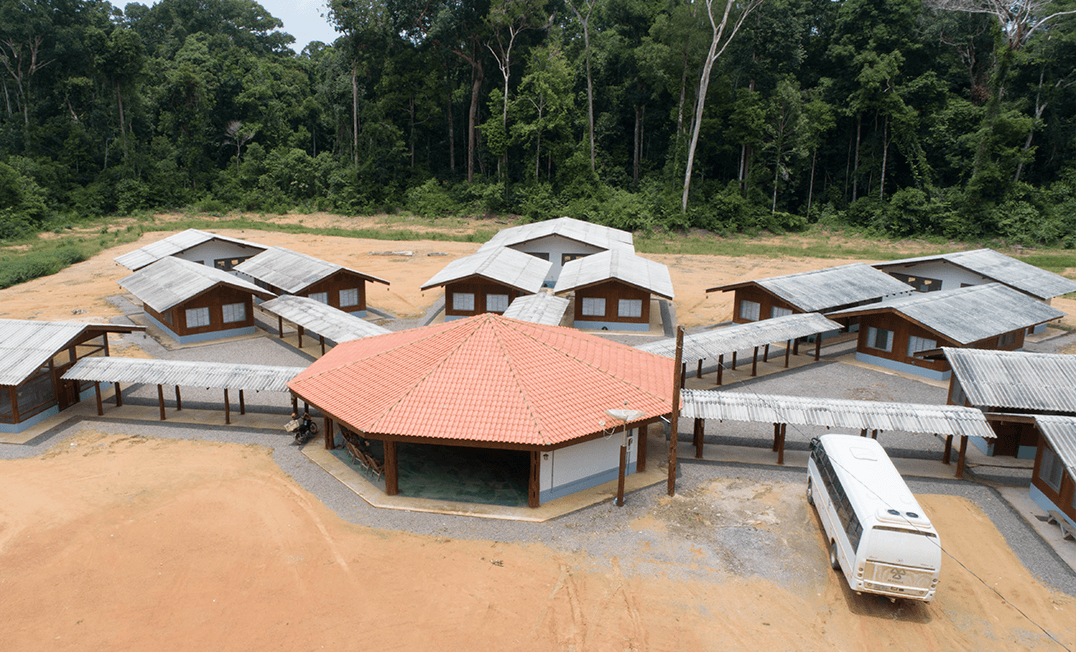
🌳 EM UMA GRANDE CONQUISTA PARA A SOCIEDADE BRASILEIRA, NA NOITE DE ONTEM, A CÂMARA DOS DEPUTADOS APROVOU O PROJETO DE LEI QUE REGULAMENTA O MERCADO DE CARBONO BRASILEIRO.
Em um ano marcado pelo agravamento da crise climática mundial, no qual vivemos temperaturas extremas, secas em locais inéditos e enchentes trágicas, foi histórica a união que presenciamos na Câmara dos Deputados do Brasil com a aprovação do Mercado Regulado de Carbono. O projeto, que é um dos principais pilares do Plano de Transição Ecológica anunciado pelo governo, já suscitava dúvidas sobre sua possibilidade de avanço ainda em 2023, devido à expectativa frustrada de votação antes da COP28. Entretanto, na última sessão legislativa do ano, o PL 2.148/2015 foi pautado no Plenário da Câmara, obtendo 299 votos favoráveis dos 404 parlamentares presentes, ou seja, 73,76% dos nossos deputados votaram a favor desse importante mecanismo de incentivo à descarbonização.
Desde a sanção da Política Nacional de Mudanças Climáticas, em 2009, há a previsão legal no Brasil de criação de um mercado regulado de carbono. São longos 14 anos de espera, um período no qual perdemos grandes oportunidades de nos posicionarmos na vanguarda mundial como um país líder na criação de soluções inovadoras que impulsionam o crescimento econômico de maneira sustentável. Não custa lembrar que, em 2009, o ETS Europeu, primeiro mercado regulado do gênero no mundo, tinha apenas 3 anos de idade e ainda engatinhava. Hoje movimenta mais de 751 bilhões de Euros em comércio, gerando uma arrecadação de € 38 bilhões anuais para os países do bloco.
[divider height=”30″ style=”default” line=”default” color=”” themecolor=”0″]
Mas por que possuir um mercado regulado de carbono nacional é tão importante?
Primeiramente, é sempre importante ressaltar a diferença entre o Mercado Regulado e o Mercado Voluntário de Carbono. No Mercado Regulado, o Estado institui um limite de emissão de Gases de Efeito Estufa (GEE) no âmbito do setor produtivo, possibilitando a eventual comercialização de déficits e superávits de emissões entre si. Já o Mercado voluntário é caracterizado por um ambiente no qual pessoas, empresas e organizações neutralizam suas emissões de GEE por meio de créditos de carbono.
Segundo a regulação proposta, empresas que emitem mais de 10 mil toneladas de dióxido de carbono equivalente – CO2E1 por ano serão instadas a estabelecer um plano de monitoramento de suas emissões, desenvolvendo um relato periódico, enquanto empresas acima de 25 mil toneladas de CO2E por ano precisarão, além do relato e monitoramento, conciliar suas emissões por meio de licenças de emissões distribuídas gratuitamente ou onerosamente pelo governo. Calcula-se que há cerca de 5 mil empresas no Brasil que emitem mais de 25 mil toneladas de CO2E. Assim, o Mercado Regulado brasileiro, quando implantado, será o maior mercado de carbono da América Latina.
Em segundo lugar, ao criarmos um sistema de comércio de licenças de emissões, no qual se possibilita a transação de cotas de emissões entre empresas que ultrapassaram seus respectivos limites de GEE com empresas que conseguiram descarbonizar seus processos produtivos, possibilitamos que a precificação do carbono fomente a competitividade da indústria brasileira e sua inovação.
Como no Brasil mais de 50% das emissões de gases de efeito estufa são resultado do desmatamento, da degradação florestal e da mudança do uso do solo, a proposta de lei está sendo feliz em instituir a interoperabilidade entre os mercados voluntário e regulado, por meio da possibilidade de que empresas compensem parte de suas emissões por meio da aquisição de Certificados de Redução ou Remoção Verificada de Emissões – CRVE, que serão créditos de carbono voluntários convertidos para a comercialização no mercado regulado, após a definição, pelo Estado brasileiro, de quais certificadoras e metodologias atualmente disponíveis serão passíveis de aceitação nesse novo mercado.
[divider height=”30″ style=”default” line=”default” color=”” themecolor=”0″]
Falando ainda dos avanços ao mercado voluntário de carbono brasileiro, também é importante reconhecermos que a proposição aprovada pela Câmara dos Deputados estabelece importantes marcos como:
- Garantia da segurança jurídica em pontos como a titularidade dos créditos, no qual foi definido que, enquanto permanecem as atuais definições para o crédito de carbono voluntário, quando um crédito de carbono se transforma em CRVE, será interpretado como “ativo mobiliário”;
- Livre iniciativa (inclusive estatal) no desenvolvimento de projetos de geração voluntária de créditos de carbono;
- Regras que impeçam a dupla contagem de créditos e aumentem a integridade socioambiental dos projetos;
- Atualização da legislação tributária e de natureza jurídica de créditos voluntários;
- Liberdade para que os estados implementem seus próprios programas jurisdicionais (de responsabilidade do poder público) de geração de carbono, ao mesmo tempo em que também há a garantia da possibilidade de que imóveis privados exerçam seu direito de propriedade ao pedir a exclusão de suas respectivas áreas de tais programas;
- Inclusão da possibilidade de que projetos de destinação ambientalmente adequada de resíduos e reciclagem possam gerar créditos de carbono;
- Garantia da participação das comunidades tradicionais e povos indígenas na repartição dos benefícios sociais e monetários obtidos com projetos em suas áreas. Iniciativas de ARR destinarão, no mínimo, 40% dos créditos de carbono gerados para as comunidades, enquanto projetos de REDD+ destinarão 60% desses créditos; e
- Garantia de que assentados em projetos de reforma agrária tenham os mesmos direitos e deveres que povos indígenas e comunidades tradicionais.
[divider height=”30″ style=”default” line=”default” color=”” themecolor=”0″]
Já em relação a novos tópicos do mercado regulado inseridos:
- Destinação de 85% dos recursos arrecadados pelo mercado regulado para o financiamento de atividades de pesquisa científica e desenvolvimento tecnológico com a finalidade de promover a descarbonização das atividades produtivas;
- Entrada de veículos automotores como fonte de emissão regulada;
- Unidades de tratamento e destinação final ambientalmente adequada de resíduos serão consideradas a partir do seu potencial transversal de mitigação de emissões de gases de efeito estufa, não estando sujeitas aos limites de emissão de que trata a lei quando comprovadamente adotarem sistemas e tecnologias para neutralizar tais emissões; e
- Duplo grau recursal para eventual aplicação de multas por não cumprimento da conciliação de emissões.
[divider height=”30″ style=”default” line=”default” color=”” themecolor=”0″]
Ressaltamos que ainda há diversos passos necessários à implementação do mercado regulado brasileiro. A principal sem dúvida será o estabelecimento das curvas de redução setoriais, etapa onde o lobby dos grandes poluidores vai se fazer mais presente. A proposição passará agora para a avaliação do Senado Federal, onde espera-se um aperfeiçoamento ainda maior de alguns dispositivos. Após a sanção, ainda haverá um período de pelo menos cinco anos para que toda a sociedade se adapte da melhor forma possível à legislação.
A Biofílica Ambipar continuará prestando o trabalho de interesse público de compartilhamento de nossa expertise técnica com o parlamento, o governo federal, os estados, a sociedade civil e, principalmente, nossos clientes engajados na descarbonização seus negócios.
[divider height=”30″ style=”default” line=”default” color=”” themecolor=”0″]
[1] O dióxido de carbono equivalente é uma medida métrica utilizada para comparar as emissões de vários gases de efeito estufa baseado no potencial de aquecimento global em relação ao dióxido de carbono (CO2). Por exemplo, o potencial de aquecimento global do gás metano é 21 vezes maior do que o potencial do gás carbônico (CO2). Então, dizemos que o CO2 equivalente do metano é igual a 21.























